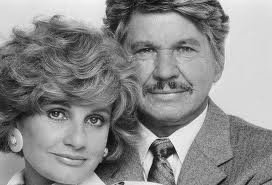If there is no blog after this, it's because I have computer problems.
Virginia, officially the Commonwealth of Virginia, is a state in the Southeastern and Mid-Atlantic regions of the United States between the Atlantic Coast and the Appalachian Mountains. The state's capital is Richmond and its most populous city is Virginia Beach, though its most populous subdivision is Fairfax County, part of Northern Virginia, where slightly over a third of Virginia's population of 8.72 million live as of 2023.
The Blue Ridge Mountains cross the western and southwestern parts of the state. The state's central region lies predominantly in the Piedmont. Eastern Virginia is part of the Atlantic Plain, and the Middle Peninsula forms the mouth of the Chesapeake Bay. The fertile Shenandoah Valley fosters the state's most productive agricultural counties, while the economy in Northern Virginia is driven by technology companies and U.S. federal government agencies, including the U.S. Department of Defense and Central Intelligence Agency. Hampton Roads is also the site of the region's main seaport and Naval Station Norfolk, the world's largest naval base.
Virginia's history begins with several Indigenous groups, including the Powhatan. In 1607, the London Company established the Colony of Virginia as the first permanent English colony in the New World. Virginia's state nickname, the Old Dominion, is a reference to this status. Slaves from Africa and land from displaced native tribes fueled the growing plantation economy, but also fueled conflicts both inside and outside the colony. Virginia was one of the original Thirteen Colonies in the American Revolution and several key battles were fought there during that war. More major battles were fought in Virginia during the American Civil War, which split the state as the government in Richmond joined the Confederacy, but many northwestern counties remained loyal to the Union, which led to the separation of West Virginia in 1863.
Although the state was under one-party rule for nearly a century following the Reconstruction era, both major political parties have been competitive in Virginia since the repeal of Jim Crow laws in the 1970s. Virginia's state legislature is the Virginia General Assembly, which was established in July 1619, making it the oldest current law-making body in North America. It is made up of a 40-member Senate and a 100-member House of Delegates. Unlike other states, cities and counties in Virginia function as equals, but the state government manages most local roads inside each. It is the only state where governors are prohibited from serving consecutive terms.
Earliest inhabitants
Nomadic hunters are estimated to have arrived in Virginia around 17,000 years ago. Evidence from Daugherty's Cave in Russell County shows it was regularly used as a rock shelter by 9,800 years ago. During the late Woodland period (500–1000 CE), tribes coalesced, and farming, first of corn and squash, began, with beans and tobacco arriving from the southwest and Mexico by the end of the period. Palisaded towns began to be built around 1200, and the native population in the current boundaries of Virginia reached around 50,000 in the 1500s. Large groups in the area at that time included the Algonquian in the Tidewater region, which they referred to as Tsenacommacah, the Iroquoian-speaking Nottoway and Meherrin to the north and south, and the Tutelo, who spoke Siouan, to the west.
In response to threats from these other groups to their trade network, thirty or so Virginia Algonquian-speaking tribes consolidated during the 1570s under Wahunsenacawh, known in English as Chief Powhatan. Powhatan controlled more than 150 settlements that had total population of around 15,000 in 1607. Three-fourths of the native population in Virginia, however, died from smallpox and other Old World diseases during that century, disrupting their oral traditions and complicating research into earlier periods.[ Additionally, many primary sources, including those that mention Powhatan's daughter, Pocahontas, were created by Europeans, who may have held biases or misunderstood native social structures and customs.
Statehood
In the decade following the French and Indian War, the British Parliament under prime ministers Grenville, Chatham, and North passed new taxes on various colonial activities. These were deeply unpopular in the colonies, and in the House of Burgesses, opposition to taxation without representation was led by Patrick Henry and Richard Henry Lee, among others. Virginians began to coordinate their actions with other colonies in 1773 and sent delegates to the Continental Congress the following year.[37] After the House of Burgesses was dissolved in 1774 by the royal governor, Virginia's revolutionary leaders continued to govern via the Virginia Conventions. On May 15, 1776, the Convention declared Virginia's independence from the British Empire and adopted George Mason's Virginia Declaration of Rights, which was then included in a new constitution that designated Virginia as a commonwealth, using a translation of the Latin term res publica. Another Virginian, Thomas Jefferson, drew upon Mason's work in drafting the national Declaration of Independence.
After the American Revolutionary War began in 1775, George Washington was selected by the Second Continental Congress in Philadelphia to head the Continental Army, and many Virginians joined the army and other revolutionary militias. Virginia was the first colony to ratify the Articles of Confederation in December 1777. In April 1780, the capital was moved to Richmond at the urging of Governor Thomas Jefferson, who feared that Williamsburg's coastal location would make it vulnerable to British attack. British forces indeed landed around Portsmouth in October 1780, and soldiers under Benedict Arnold managed to raid Richmond in January 1781. The British army had over seven thousand soldiers and twenty-five warships stationed in Virginia at the beginning of 1781, but General Charles Cornwallis and his superiors were indecisive, and maneuvers by the three thousand soldiers under the Marquis de Lafayette and twenty-nine allied French warships together managed to confine the British to a swampy area of the Virginia Peninsula in September. Around sixteen thousand soldiers under George Washington and Comte de Rochambeau quickly converged there and defeated Cornwallis in the siege of Yorktown. His surrender on October 19, 1781, led to peace negotiations in Paris and secured the independence of the colonies.
Virginians were instrumental in the new country's early years and in writing the United States Constitution. James Madison drafted the Virginia Plan in 1787 and the Bill of Rights in 1789. Virginia ratified the Constitution on June 25, 1788. The three-fifths compromise ensured that Virginia, with its large number of slaves, initially had the largest bloc in the House of Representatives. Together with the Virginia dynasty of presidents, this gave the Commonwealth national importance. In 1790, Virginia and Maryland ceded territory to form the new national capital, which moved from Philadelphia to the District of Columbia a decade later, in 1800. In 1846, the Virginian area of the new capital was retroceded. Virginia is called the "Mother of States" because of its role in being carved into states such as Kentucky, which became the fifteenth state in 1792, and for the numbers of American pioneers born in Virginia. It's also known as the Mother of Presidents, being the home state of eight different Presidents, the highest in the nation.
^ Virginia State Capitol in Richmond
^Richmond Virginia
^Norfolk Virginia
^Rosslyn Virginia
If you want to read a whole lot more, go here: https://en.wikipedia.org/wiki/Virginia
- SERVES
- 4
- COOK TIME
- 25 Min
We love spring! Why? Because this is the time of year when produce is at its peak! The radishes, asparagus, and corn all taste like Heaven. That's why we made them the stars of our recipe for Roasted Spring Vegetables. After one bite you'll want to make this recipe more than just a spring-fling; no matter what time of year it is, this recipe is something you'll crave.
- 1/4 cup olive oil
- 4 cloves garlic, minced
- 3/4 teaspoon salt
- 1/4 teaspoon black pepper
- 12 ounces asparagus, washed, trimmed, and cut into 2-inch pieces
- 8 radishes, washed, trimmed, and cut in half
- 3 ears fresh corn, cut into 1-inch chunks
- 1 tablespoon chopped fresh dill
- Preheat oven to 400º. Coat a baking sheet with cooking spray.
- In a large bowl, combine olive oil, garlic, salt, and pepper; mix well. Add vegetables to mixture and toss until evenly coated. Spread in a single layer on prepared baking sheet.
- Bake 25 to 30 minutes, or until veggies start to brown. Sprinkle with dill and serve.





.jpg)
.jpg)





No comments:
Post a Comment